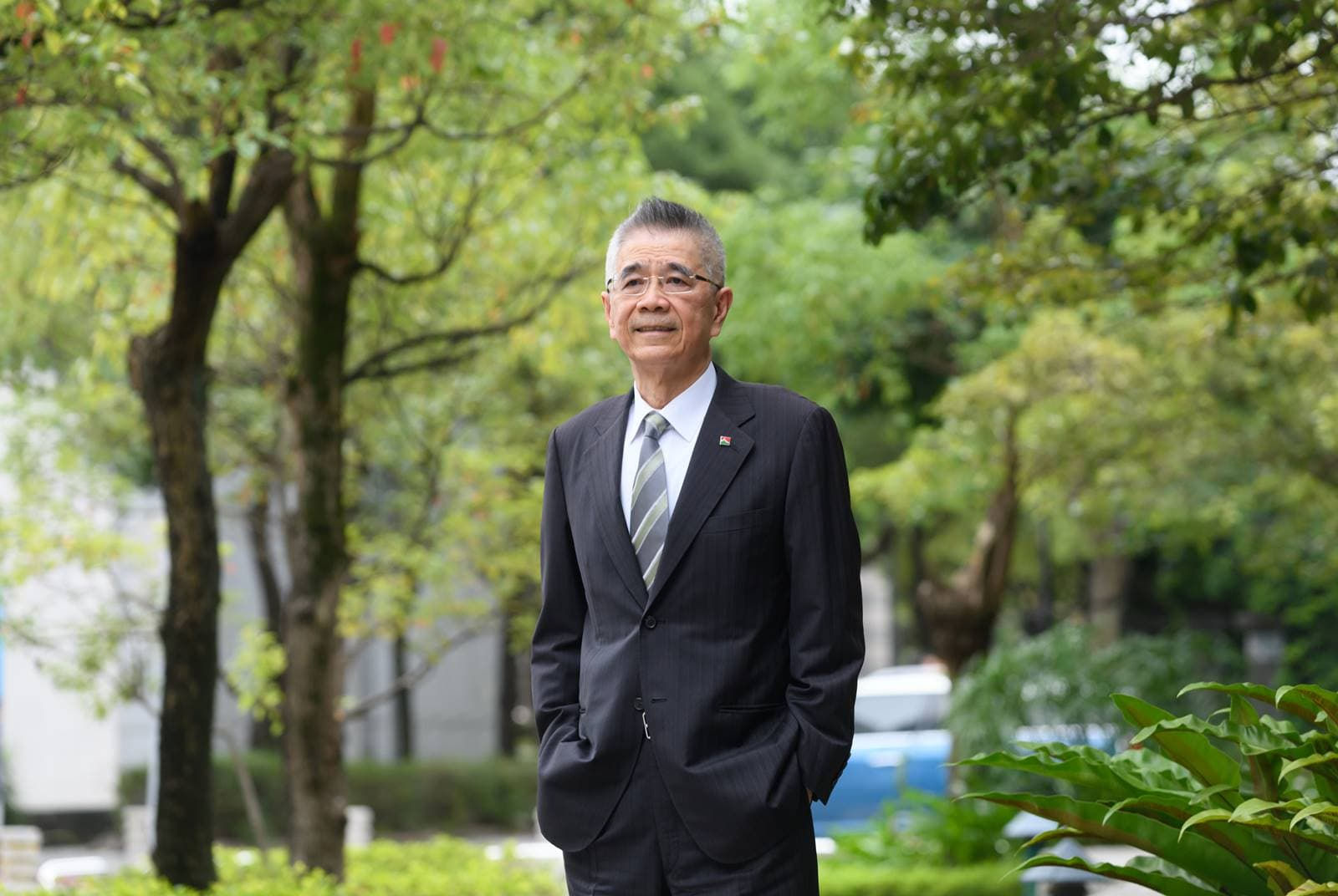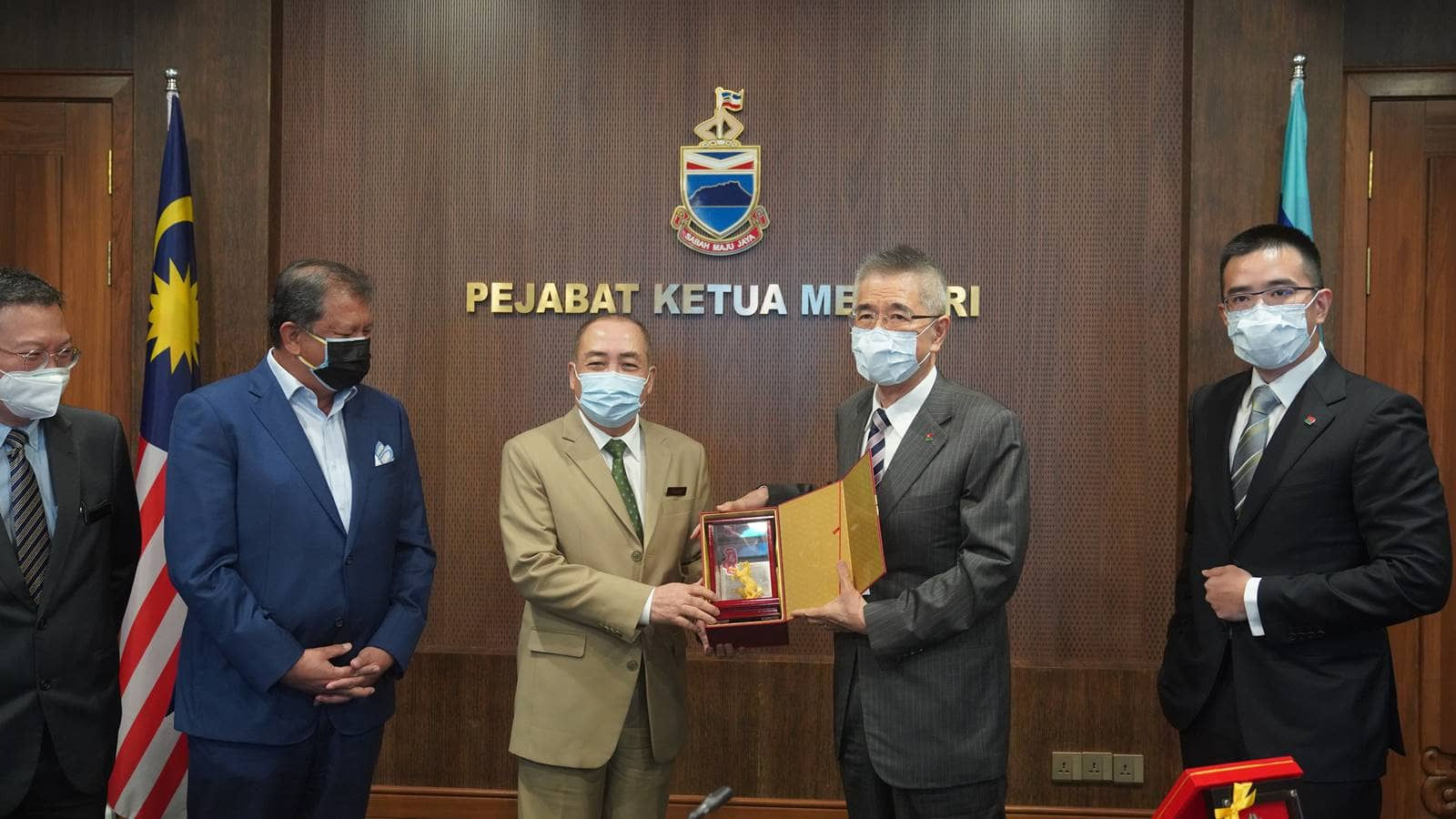Spending 1.4 billion on a small Malaysian island to plant trees, what is Sinyi Realty thinking?

Source:Sinyi Realty
Having replaced light bulbs and purchased green electricity, what else can corporations do to reduce carbon emissions? Sinyi Realty spent NT$1.4 billion to buy Mengalum Island in Malaysia, and plans to plant trees on this island spanning more than the area of 10 Daan Forest Parks. What do they have in mind?
Views
Spending 1.4 billion on a small Malaysian island to plant trees, what is Sinyi Realty thinking?
By Teng Kai-yuanFrom CommonWealth Magazine (vol. 736 )
Sinyi Realty founder Chun-chi Chou is back in Taiwan fresh from a visit to Mengalum Island in Malaysia. He had a mysterious mission on the trip: to create a “net zero” island.
Two years ago, Sinyi Realty dropped NT$1.4 billion to purchase the Malaysian island spanning over 10 times the area of Taipei’s Daan Forest Park, marking the company’s first foray into the tourism industry.
Last year, the plan took an unexpected turn.
The small island has the capacity to accommodate 10 hotels, but Sinyi decided to winnow that down to two, as well as refrain from building airport runways on the island. At the same time, it further endeavors to restore the island’s forest and coral reef ecology to earn carbon credits.
The first objective is to ensure that hotels achieve net zero emissions from construction through operation. Next, any unused carbon credits remaining can be used to help Sinyi Realty achieve its recently announced goal of reaching net zero emissions by 2030.
“Every year we’ve been calculating Sinyi Realty’s carbon reduction in terms of the area of how many equivalent Daan Forest Parks, when we realized that we own an island the size of more than 10 such parks. So we were curious as to how much carbon it could absorb,” relates Chou.
Chou’s recent trip to Sabah attracted considerable attention from the local government and media, and officials such as the governor and vice governor personally received Chou on his visit.
 (Source: Pei-Yin Hsieh)
(Source: Pei-Yin Hsieh)
The little island, which lies around one and one-half hours away by boat from the capital of Sabah, was formerly used as a quarantine depot by the local agricultural department for the entry and exit of animals and livestock.
Although rich with tourism potential, it has lacked proper management in the past. Not only have the island’s forests been burnt by fires, but the use of explosive charges in fishing has caused damage to the coral reef ecology.
“Once when I was visiting a neighboring island to Mengalum Island, I observed from close up sea turtles coming ashore at night, and the next day saw how sea turtle eggs were preserved,” relates Chou. That trip impressed upon him that Sabah’s most important resource is its natural ecology, and that only by incorporating sustainability with tourism and travel can it distinguish itself in the highly competitive tourism industry.
Upon taking over ownership of the island, Sinyi engaged an international consulting team that specializes in environmental planning and carbon credit calculation. Starting with foundational surveys of the geology, water resources, tree varieties, and animal ecology, they searched for the best development and restoration approaches for the area.
 Sinyi Realty founder Chun-chi Chou meets with the governor of the state of Sabah. (Source: Sinyi Realty)
Sinyi Realty founder Chun-chi Chou meets with the governor of the state of Sabah. (Source: Sinyi Realty)
Chou remarks that, given an appropriate degree of development, along with the provision of employment opportunities, the locals will cease fishing with explosives and burning the forests.
However, building a net-zero island is vastly different from developing a typical hotel.
For instance, most resort hotels are built along the first row with coastal views. However, apart from the importance of views, Mengalum Island hotels will be built on relatively barren wooded land, so as to avoid the needless felling of trees. Further, in terms of overland transportation, as well as modes of transportation to access the island, water vessels output less carbon than airplanes, so no runways will be built on the island.
In the future, the impact of the net-zero island will not be limited to Mengalum Island.
Chou relates that once the island has been successfully restored, the trees planted on land and the seaweed in the ocean can sequester carbon, becoming an important resource in Sinyi’s progress toward net zero.
Sinyi is going to great lengths and traveling considerable distances to plant trees in Malaysia rather than Taiwan. Dani Chen, executive director of the Sinyi Strategic and R&D Center, relates that the company team had previously looked for land in Taiwan, but due to the small area and dense population of Taiwan, the supporting measures related to planting trees and accumulating carbon credits are still under development, so they halted their search.
Chyi-Rong Chiou, associate professor of the School of Forestry and Resource Conservation at National Taiwan University, has spent many years studying carbon transactions across the international forestry industry. Professor Chiou explains that there is a strict certification process for accumulating carbon credits for planting trees. First, the tree-planting plan must be submitted for review, and the tree growth continually monitored. Only after confirmation that the trees have grown according to the plan can certification be given. Only then can one proceed to make transactions on the international market. However, Taiwan’s accompanying measures related to certification and verification are not yet in place.
Still, corporations cannot simply achieve net zero emissions by purchasing carbon credits .
Currently, for corporations to declare having achieved net zero carbon emissions, the main international standards are the SBTi (Science-based Target initiatives) promoted by non-governmental organizations (NGOs).
Net zero avenues under SBTi can be divided into two portions. First is that corporations must propose tangible carbon reduction plans and targets and achieve certification by international organizations. Only once maximum reductions have been achieved can remaining carbon emissions be offset by carbon exchanges or carbon mitigation.
Sinyi Realty’s proposed carbon reduction targets and approach gained SBTi approval this past August.
Dani Chen admits that “the pressure to reduce carbon (emissions) is huge” in order to accumulate carbon credits. Like such fundamental actions as purchasing green electricity and climate control, the company has done everything that could be done over the past decade. Thus it must constantly think of new approaches if it is to achieve net zero emissions.
“Sinyi Realty is really smart to link up the currently en vogue carbon credits and tourism development,” offers Professor Chyi-Rong Chiou, who has previously consulted with Sinyi Realty about a tree-planting program to offset carbon.
At present the Mengalum Island plan is proceeding at full speed; the restoration plan is expected to be fully drawn up during the first half of 2022, and carried out over the second half of the year, with work beginning on actual development around three years from now.
Chou says that the island will not be making money very quickly, “but low-carbon tourism is the trend of the future, making it a worthwhile investment.”
Have you read?
♦ COP26 to showcase Scotland’s global commitment to a net zero future
♦ Can SMEs become carbon neutral?
Translated by David Toman
Edited by TC Lin
Uploaded by Jane Chen






